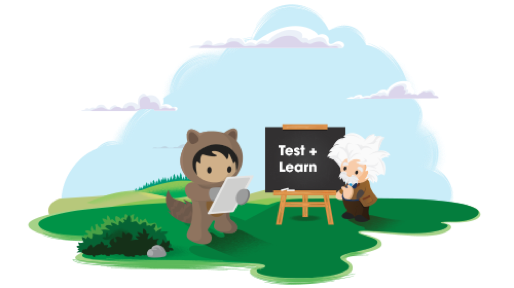You can tell a lot about an organisation by the way it articulates its customer’s journey. More specifically, by the way its different teams think about the customer journey when making their decisions and plans.
Companies that see themselves as customer-centric may fall down on execution if people aren’t all using the same lens when viewing their customers. Leading companies are evolving that lens and using it not only to create the most valuable experiences, but also to align their organisations in support of that experience.
Consider a simple example most of us can relate to. You’re packing for your business trip, and you’re trying to fit what you need into just one cabin bag. You wonder, does my hotel room have an iron? A diffuser? A safe big enough for my laptop? A charging point near the bed? A sound system I can connect to? Changing rooms at the pool? Very few hotels make it easy for you to find out exactly what’s available when you’re packing. You’re more likely to find out about the facilities when you arrive, and find yourself regretting the unnecessary things you packed.
What would it take for a hotel to realise they need to think about solving this particular customer challenge? Let’s look at how different customer-journey lenses affect the process of experience design.
The Functional Journey: “Marketing → Sales → Service”
In this model, the customer journey is viewed as a series of handovers between departments. Marketing makes first contact, then at some qualification point the customer moves to Sales, then after purchase to Service. It views the customer through the lens of your own internal processes. Typically each department will define their subsection of this customer journey, so for example Marketing may define a variety of journeys between various communication points. Chances are that the handover between subsections is not as well conceptualised. Our packing experience falls in the crack between Sales and Service.
The Target Journey: “Acquisition → Conversion → Retention”
Here, the customer journey is viewed as a series of business targets. The first step is to get buyers to your sales channel. Once there, the task is to help them decide and buy, after which there’s a task to keep them happy and buying more. This is most often just Marketing, Sales, Service in a different guise. In the best cases, it does drive a cross-functional focus on these outcomes. After all, my booking is not a commitment, and I can still cancel if I find better info elsewhere. But it’s still an internal lens for looking at the customer.
The Engagement Journey: “Awareness → Interest → Consideration → Purchase → Post-purchase → Re-purchase”
This journey is a series of desired outcomes in the customer’s thinking or actions. It looks superficially like a customer-centric lens, but in reality it’s more of a product-centric one. It’s about the customers’ engagement with the product on offer – what type of decision they are making about it, and how that decision can best be supported. It focuses on the customer more to see how they can help you achieve your objective, rather than how you can help them achieve theirs.
The Activity Journey, e.g.: "Searching → Booking → Checking-in → etc"
This is a significant step forward, as it is the first model to start thinking from the customer’s perspective. This journey will be specific to a particular user and context. Experience designers excel at teasing out the steps in such a journey from the mind of associates, who know the customer best. The potential pitfall is that staff know the customer at the touch-points where they interact, but often not much in between. The outcome can be a journey that jumps from touch-point to touch-point, e.g. searching, booking, check-in, but omits an important non-touch-point such as packing.
The Goal Journey: Decision Framing → Decision Making → Transacting → Evaluating
Expanding the customer journey beyond the usual touch-points takes research, and the challenge is not to constrain that research within the usual framing. Because customer journeys are so context-dependent, often each one has to be discovered from scratch, and it’s easy to miss things out.
This is why Salesforce has developed a generalised Customer Experience Framework that abstracts this type of customer journey in a way that applies in most buying situations. At its simplest, it’s a useful checklist. At a higher level, it is a conversation starter, an imagination primer and a scaffolding for designing cross-functional synergy into the customer experience.
As it turns out, every business function has a role to play in each of the 12 main journey steps, and each function has to play a distinctly different role in each step. No single team could optimise any part of this journey on their own. So looking at the customer journey through this lens is a powerful and functionally neutral way to focus minds on how to align to deliver an exceptional customer experience. And as we all know, that’s the best way to drive business success in the connected world.
Use the customer journey as a focus
A useful way to drive focus on the most important interfaces first, is to look at them in the context of the shopper journey. A “Shopper Goal“ lens can provide a framework for designing cross-functional synergy into the customer experience. Because every business function has a role to play in each step of this customer journey, a focus on a particular step provides a functionally-neutral way to align different teams’ use of data and experimentation relating to that aspect of the customer experience. A systematic approach to this process can be valuable for identifying which enhancements will be most important to test.
Many digital leaders will admit that they spend most of their time on business-as-usual, with little bandwidth for optimisation, much less looking to the future. If you have a team whose role is business development, these guidelines may help you to ensure they have the right support from elsewhere in the business. For those who do not, Salesforce has developed a framework and tool to assess how well your organisation uses data and digital thinking to support and optimise the shopper journey.
Ultimately, the aim is to have confidence that the entire organisation has a consistent understanding of your customer and is prioritising the most important changes for growing revenue and profit.
See how you can turn your vision into a reality using an efficient, iterative process with Experience Design team creates solutions powered by the Salesforce Platform.






